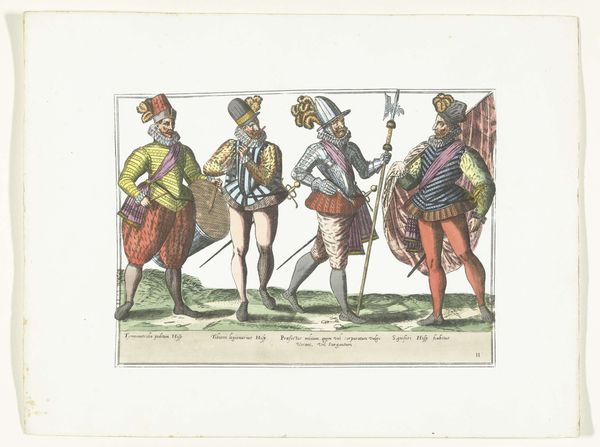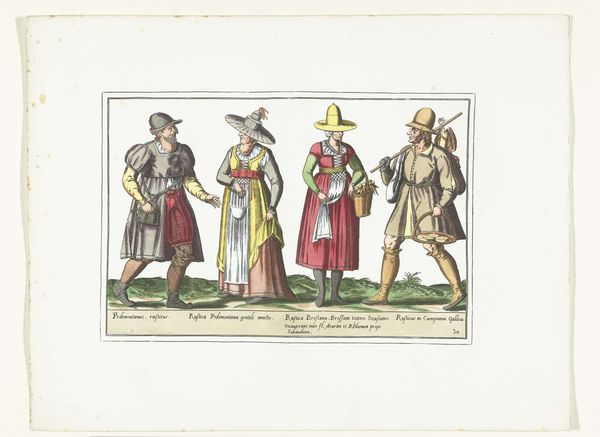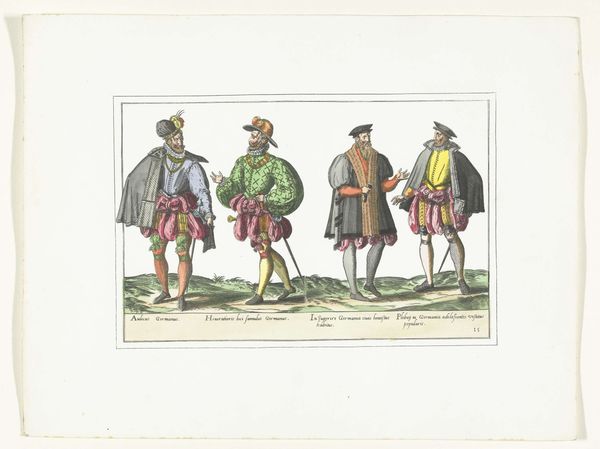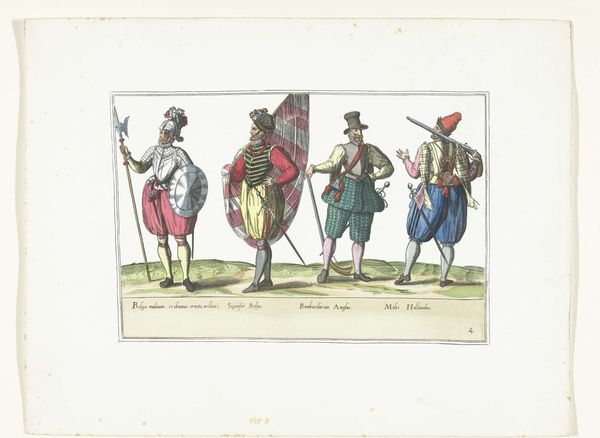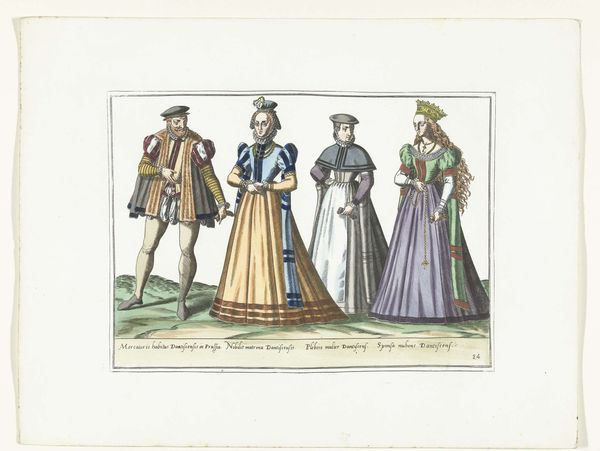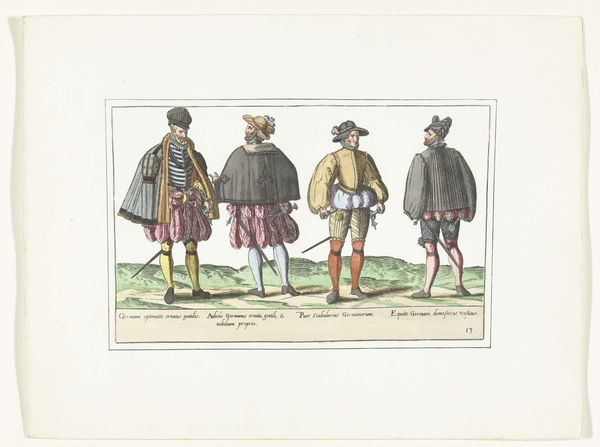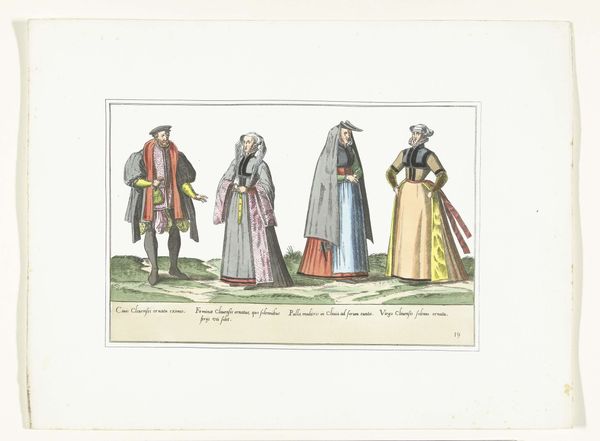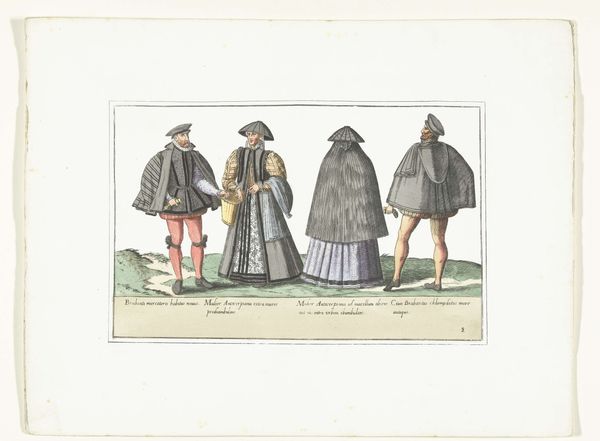
Drie Spaanse militairen in uniform en een marketentster, ca. 1580 1872 - 1875
0:00
0:00
print, engraving
#
medieval
# print
#
traditional media
#
figuration
#
history-painting
#
engraving
Dimensions: height 274 mm, width 360 mm
Copyright: Rijks Museum: Open Domain
Editor: This print, dating from 1872-1875, is titled *Drie Spaanse militairen in uniform en een marketentster, ca. 1580*. It's attributed to an anonymous artist. I am really intrigued by their attire – it seems almost theatrical, or perhaps excessively ornate, for soldiers! What strikes you about this work? Curator: The figures stand stiffly, each with particular props. See how their poses are almost identical? In my reading, their garments work like a symbolic language. Their individual clothing and the accoutrements identify their roles, visually encoding a hierarchy and order. It represents much more than mere military fashion. Editor: Could you elaborate on that idea of symbolic language in dress? Curator: Consider how the fabrics, colors, and ornamentation function as social markers. For example, the elaborate detailing – plumes, slashing, and the cut of each piece—assert their elevated status. Each element proclaims authority and reinforces collective identity and allegiance. Their sartorial choices offer psychological insight: carefully cultivated displays of self, constructed to intimidate or inspire loyalty. Do you notice a similar language operating in contemporary fashion? Editor: That’s fascinating! I guess I hadn't considered clothing as such a potent form of communication, or how consistently this visual language has existed across time. It really sheds new light on what I had previously considered “fashion." Curator: Exactly! Prints like this remind us that clothing has consistently functioned as a complex system of signs, laden with psychological, cultural, and historical weight. Looking at the clothes, we can glimpse entire worldviews. Editor: This definitely shifts how I view both historical artwork and people today; everything they choose to wear reflects something about their place and ideas. Thanks so much.
Comments
No comments
Be the first to comment and join the conversation on the ultimate creative platform.
